St. Stephen's Basilica: A Visitor's Guide to Budapest's Landmark
Standing majestically in the heart of Budapest, St. Stephen's Basilica commands attention with its soaring dome and neoclassical grandeur. Named after Hungary's first king and patron saint, this architectural masterpiece serves as both a spiritual sanctuary and one of the city's most spectacular viewpoints. The basilica's 96-meter dome matches the height of the Hungarian Parliament Building, symbolizing the historical balance between church and state in Hungarian society.
More than just a place of worship, St. Stephen's Basilica houses Hungary's most sacred relic and offers visitors an extraordinary journey through art, history, and breathtaking panoramic views. Whether you're drawn by its architectural splendor, curious about the mysterious Holy Right Hand, or eager to witness Budapest's skyline from above, this magnificent basilica promises an unforgettable experience.

Architectural Marvel
St. Stephen's Basilica represents a harmonious blend of Neoclassical and Neo-Renaissance architectural styles, creating one of Europe's most impressive religious buildings. The structure follows a Greek cross floor plan with four arms of equal length, emphasizing the central dome that dominates the Pest skyline. Construction began in 1851 under architect József Hild, but the project faced dramatic setbacks when the original dome collapsed in 1868, requiring complete reconstruction under Miklós Ybl's direction.
The western facade showcases elegant Ionic columns and statues of the twelve apostles, while two substantial bell towers flank the entrance, each rising 67 meters into the sky. The basilica's exterior walls display refined Neoclassical elements that reflect the grandeur and artistic sensibilities of late 19th-century European architecture. The building spans 96 meters in length and 86 meters in width, creating an imposing presence that has anchored Budapest's cityscape for over a century.
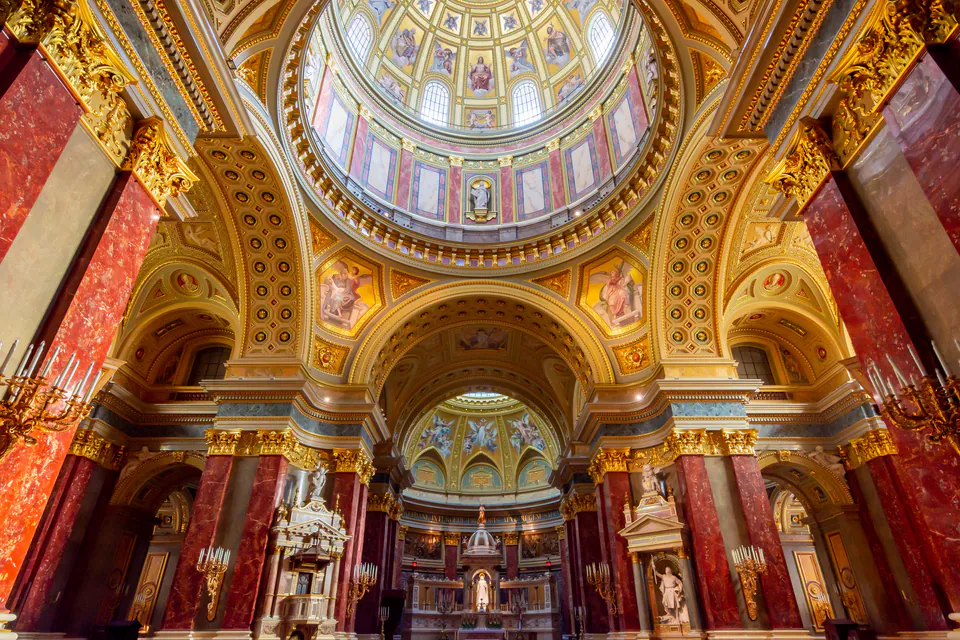
Interior Treasures
The basilica's interior functions as a gallery of Hungarian artistic achievement from the late 19th and early 20th centuries. Above the main entrance, visitors encounter a striking mosaic in the tympanum designed by Mór Than in 1893 and executed by Salviati of Venice, depicting "Our Lord on the Throne with Angels." The magnificent dome features representations of God, Christ, prophets, and evangelists created by renowned artist Károly Lotz.
The sanctuary vault displays allegories of the Holy Mass in mosaic form by Gyula Benczúr, who also highlighted important stages in St. Stephen's life through bronze reliefs by Ede Mayer. The impressive canopy altarpiece, designed by József Kauser, features a statue of St. Stephen sculpted by Alajos Stróbl. Additional artistic treasures include altar paintings by notable artists such as Gyula Benczúr's "St. Stephen offers the crown to Mary," Gyula Stetka's "Christ on the Calvary," and vibrant glass paintings by Miksa Róth.
The pulpit, another creation of József Kauser, and various other artworks throughout the basilica demonstrate the exceptional talent of Hungarian artists during this golden period of ecclesiastical art. Every surface tells a story, from the intricate floor patterns to the gilded ceiling details that catch and reflect light throughout the sacred space.
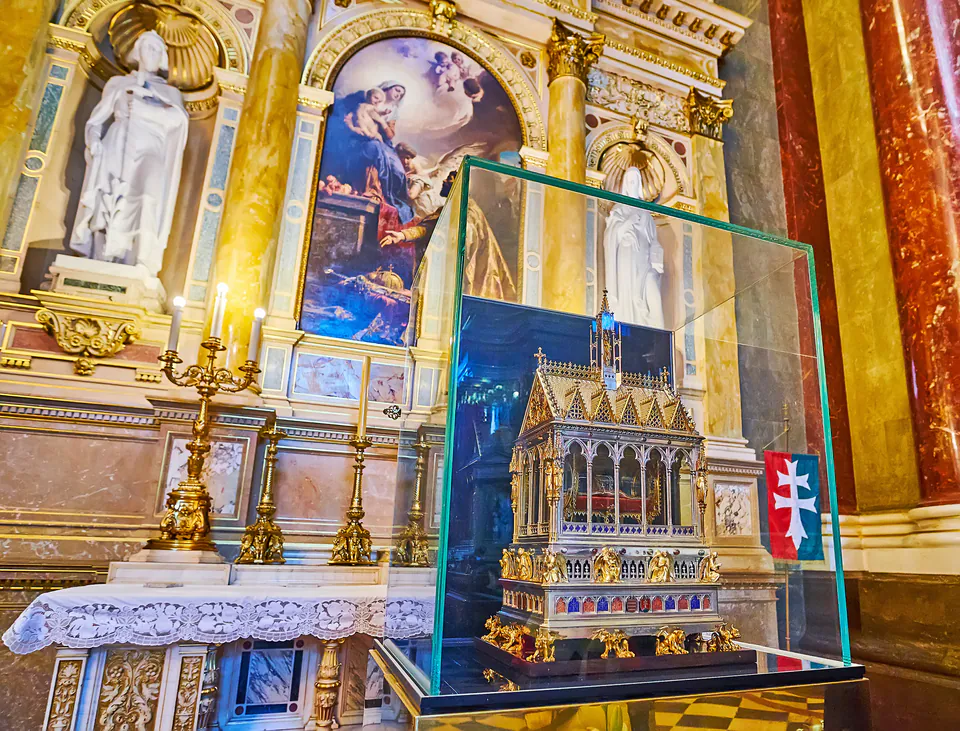
The Holy Right Hand
Perhaps the most extraordinary treasure within St. Stephen's Basilica is the Szent Jobb, or Holy Right Hand—the mummified right hand of St. Stephen, Hungary's first king. This remarkable relic holds immense historical and religious significance for the Hungarian people, who have cherished it for over a millennium. The Holy Right Hand represents not just a religious artifact but a symbol of Hungarian statehood and Christian faith.
Displayed in a beautifully crafted neo-Gothic silver and glass reliquary, the relic occupies a dedicated chapel on the left side of the main altar. The presence of this highly revered relic elevates St. Stephen's Basilica to a major pilgrimage site and provides visitors with a tangible connection to Hungary's founding monarch. The mysterious preservation of the hand through centuries of political upheaval and conflict adds to its mystique and spiritual significance.
For many Hungarians, the Holy Right Hand represents the incorruptible nature of their patron saint and the enduring strength of their nation. Visitors often find themselves moved by the profound reverence surrounding this ancient relic, regardless of their personal religious beliefs.
Panorama Terrace Experience
The basilica's crowning glory lies 96 meters above street level, where the Panorama Terrace offers one of Budapest's most spectacular 360-degree views. From this elevated vantage point, the entire city unfolds in magnificent detail—the winding Danube River, the imposing Parliament Building, the historic Buda Castle, and the sprawling urban landscape that defines Hungary's capital.
Visitors can reach the observation deck through two options: a modern elevator for convenience or climbing 364 steps for those seeking a more engaging physical experience. The terrace provides unobstructed views that change dramatically with the light throughout the day. Morning visits offer crisp, clear vistas perfect for photography, while sunset transforms the cityscape into a golden panorama that captures Budapest's romantic essence.
The lookout terrace allows visitors to appreciate Budapest's unique geography, with the Danube dividing the city into Buda and Pest, and to identify major landmarks from an entirely new perspective. Many consider this viewpoint essential for understanding Budapest's layout and appreciating the city's architectural harmony.
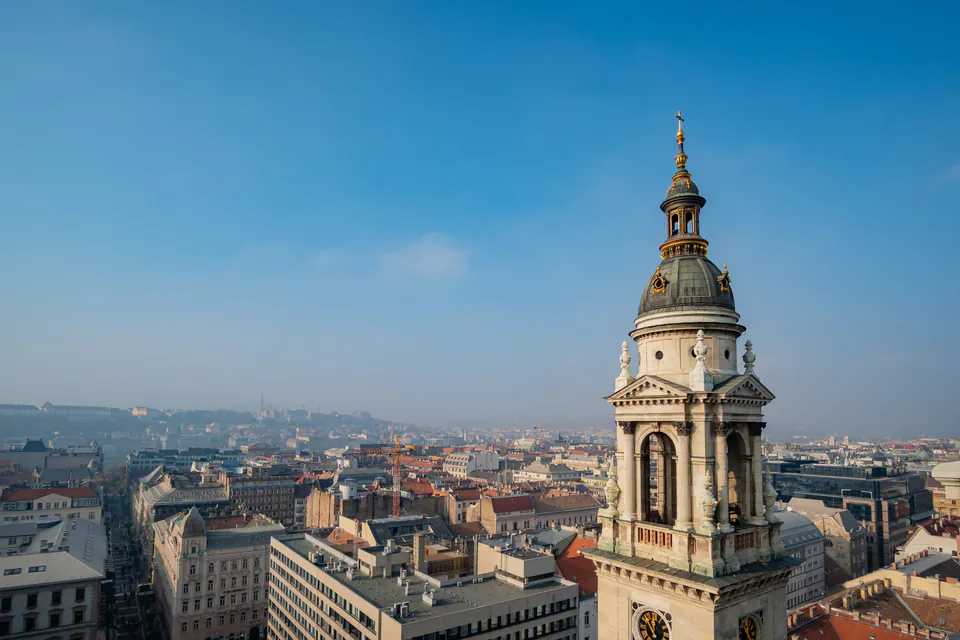
Planning Your Visit
St. Stephen's Basilica welcomes visitors throughout the week with varying hours for different areas. The main church hall operates from 9:00 AM to 6:00 PM Monday through Saturday, and from 1:00 PM to 6:00 PM on Sundays. The Panorama Terrace and Treasury maintain extended hours, opening daily from 9:00 AM to 7:00 PM, providing flexibility for visitors who wish to experience the panoramic city views outside regular worship hours.
Religious ceremonies may occasionally alter general opening hours, so checking the official websites bazilikabudapest.hu or bazilika.biz closer to your visit date ensures the most accurate schedule. The extended hours for the Panorama Terrace and Treasury accommodate visitors who prefer to avoid crowds during peak worship times or who want to catch sunset views from the dome.
| Ticket Type | Full Price (HUF) | Students/Seniors (HUF) | Family 2+2 (HUF) | Children Under 6 |
|---|---|---|---|---|
| Church Only | 2,300 | 1,700 | 5,500 | Free |
| Panorama Terrace & Treasury | 4,300 | 3,400 | 13,600 | Free |
| Combined (All Areas) | 6,000 | 4,800 | 17,400 | Free |
The main ticket office is located approximately 80 meters to the right of Szent István Square when facing the church. Even tickets purchased online require conversion to paper tickets at this office, so factor this step into your visit timing. The availability of various ticket options allows visitors to customize their experience based on interests and available time, whether focusing solely on the main church, enjoying panoramic views, or exploring all available areas.
Guided Tours and Audio Experiences
Several guided tour options enhance the basilica experience, primarily conducted in English with skip-the-line access to bypass potential queues. Standard guided tours encompass key highlights including the church interior, treasury, and panorama terrace, providing valuable historical context and artistic insights that illuminate the basilica's significance.
Private tours can be arranged for more personalized experiences, while audio guides offer multilingual commentary for self-paced exploration. The St. Stephen's Hall exhibition features guided tours conducted with tablet devices, priced at 3,900 HUF for adults and 1,950 HUF for children, students, and seniors. This self-paced yet informative option allows visitors to delve deeper into specific aspects of the basilica's history and cultural importance.
Tour schedules and availability vary, so consulting the official basilica website or reputable booking platforms ensures access to current information and reservation procedures. The comprehensive coverage provided by guided tours often reveals details and stories that independent visitors might miss, making them valuable for those seeking deeper understanding and appreciation.
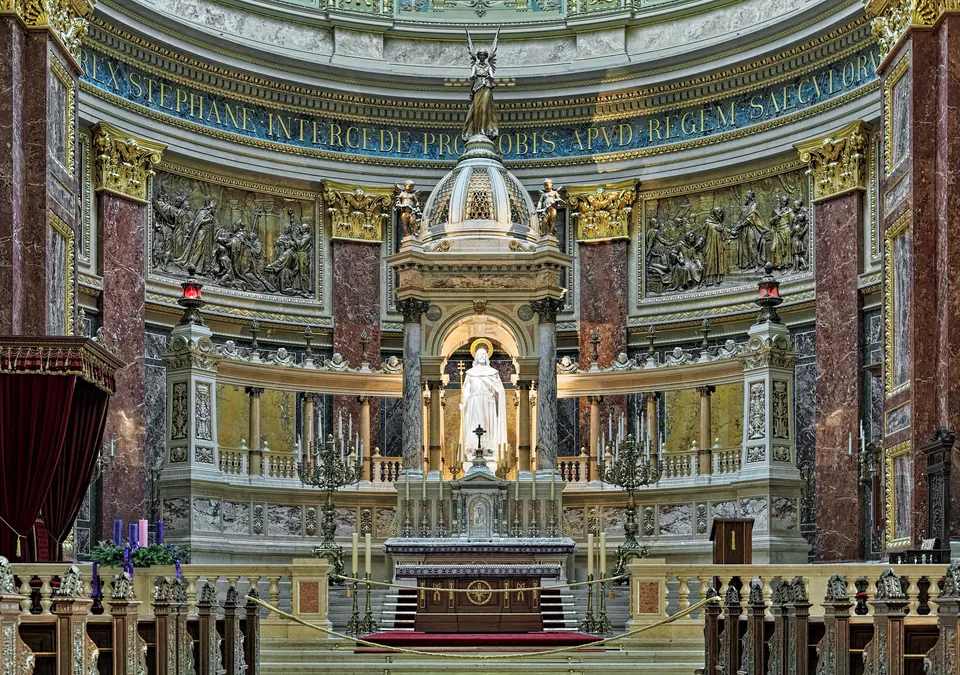
Visitor Guidelines and Etiquette
As an active place of worship, St. Stephen's Basilica maintains specific guidelines ensuring respectful experiences for all visitors. A modest dress code is strictly enforced, reflecting the sacred nature of the space. Female visitors should wear skirts or trousers reaching at least knee length, with tops covering shoulders and avoiding excessive low-cut styles. Scarves can provide additional covering when needed.
Male visitors must wear short-sleeved or long-sleeved shirts with trousers reaching at least knee length. Shorts are not permitted for any visitors, and men should remove hats upon entering. Footwear should be clean and suitable for walking, especially important for those planning to climb stairs to the dome. Failure to comply with dress code requirements may result in entry refusal, underscoring the importance of respecting the basilica's religious significance.
Photography is permitted inside the basilica, though flash photography is prohibited to protect artwork and maintain the contemplative atmosphere. Tripods are not allowed, but handheld photography captures the basilica's beauty effectively. Visitors should maintain quiet, respectful behavior, particularly during religious services or when others are in prayer.
Accessibility Features
St. Stephen's Basilica demonstrates commitment to accessibility through comprehensive features accommodating visitors with disabilities. Wheelchair access is available via a ramp at the southern end of the building, while interior elevators facilitate movement between different levels, potentially including access to the Panorama Terrace and Treasury.
A barrier-free entrance on the right side provides access to the main church and sanctuary. Disabled visitors and their companions receive free entry to the basilica. Audio guides and hearing assistance equipment serve visitors with hearing impairments, while special guide services and touch galleries accommodate visually impaired guests.
Visitors requiring assistance, such as those with mental disabilities or visual impairments, should be accompanied by a companion. These comprehensive accessibility features ensure that individuals with various disabilities can fully experience the basilica's beauty and significance, reflecting thoughtful consideration for all visitors' needs.

Surrounding Attractions
St. Stephen's Basilica enjoys a prime location in Budapest's heart, surrounded by numerous notable attractions and points of interest. Directly in front lies Szent István Square, a spacious area featuring fountains dedicated to St. Stephen and his wife Gizella. This vibrant square hosts various events throughout the year, including the popular Advent Festival & Christmas Fair and the Sweet Days Festival.
Within easy walking distance, Andrássy Avenue stretches as a grand boulevard renowned for stunning architecture, including the magnificent Budapest Opera House. Vörösmarty Square, home to the iconic Gerbeaud Cafe, offers historic elegance just minutes away. Other significant nearby landmarks include the Great Synagogue and the iconic Chain Bridge, while the Hungarian Parliament Building stands in close proximity along the Danube.
District V, where the basilica is located, serves as Budapest's inner city—a bustling center of business, administration, and culture offering numerous attractions, restaurants, cafes, and bars. The strategic location allows visitors to seamlessly combine their basilica visit with exploration of other major highlights in Budapest's vibrant city center, making it an ideal starting point for comprehensive city discovery.
Special Events and Concerts
Throughout the year, St. Stephen's Basilica hosts extraordinary musical events that take advantage of its exceptional acoustics and atmospheric setting. Classical music concerts featuring the basilica's grand organ are regularly scheduled, particularly during the Budapest Spring Festival. These performances transform the sacred space into a concert hall where music and architecture create unforgettable experiences.
The basilica's acoustic properties, enhanced by its dome and stone construction, provide ideal conditions for choral works, orchestral performances, and solo recitals. Many internationally renowned musicians and ensembles consider performing in this venue a highlight of their careers. Concert tickets often sell quickly, especially for special holiday performances or featuring celebrated artists.
English Catholic Mass is held every Sunday at 10:00 AM for international visitors and English-speaking residents. The basilica also hosts special religious ceremonies throughout the liturgical year, including elaborate Easter and Christmas celebrations that showcase Hungarian Catholic traditions in their full splendor.
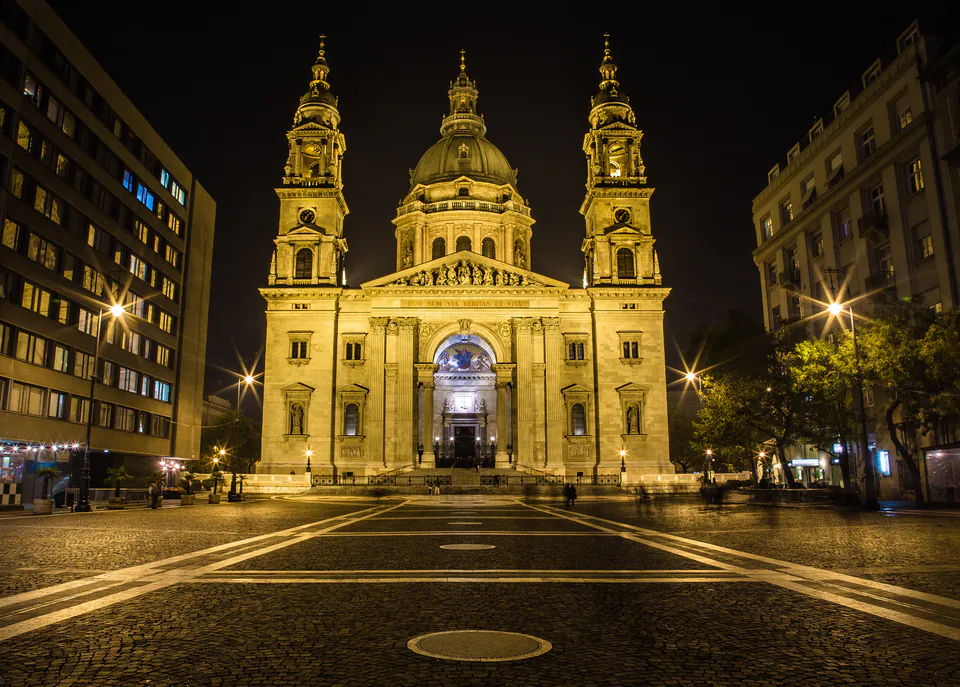
Photography and Instagram Spots
St. Stephen's Basilica offers countless opportunities for stunning photography, from architectural details to panoramic cityscapes. The exterior facade provides dramatic shots throughout the day, with morning light highlighting the neoclassical details and evening illumination creating magical golden hour images. The twin bell towers frame perfectly against blue skies, while the dome's silhouette becomes iconic against sunset colors.
Interior photography captures the interplay of natural and artificial light streaming through stained glass windows and reflecting off golden surfaces. The Holy Right Hand chapel offers unique photographic opportunities, though respectful behavior remains essential. Wide-angle lenses capture the basilica's grand scale, while detail shots reveal intricate artistic elements often overlooked by casual observers.
The Panorama Terrace provides Instagram-worthy shots of Budapest's skyline, with the Parliament Building, Chain Bridge, and Danube River creating picture-perfect compositions. Sunset photography from the dome ranks among Budapest's most sought-after shots, requiring advance planning for optimal timing and weather conditions.
Seasonal Considerations
Each season brings unique advantages for visiting St. Stephen's Basilica. Spring offers mild weather perfect for combining interior exploration with outdoor sightseeing, while blooming flowers in nearby squares add color to exterior photography. Summer provides the longest daylight hours for dome visits, though increased tourist crowds require patience and advance planning.
Autumn delivers spectacular views from the Panorama Terrace as changing foliage transforms the cityscape into a tapestry of colors. The cooler weather makes climbing the 364 steps more comfortable, while fewer tourists create more intimate experiences inside the basilica. Winter visits offer unique charm with possible snow dusting the dome and holiday decorations throughout the surrounding square.
Christmas and Easter periods feature special decorations and extended religious ceremonies, though these popular times also bring larger crowds. The basilica's interior provides warm refuge during cold weather, making it an ideal winter destination for cultural exploration.